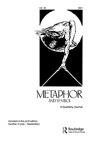Evading the Lockdown: Animal Metaphors and Dehumanization in Virtual Space
IF 3.3
3区 文学
0 LANGUAGE & LINGUISTICS
引用次数: 4
Abstract
ABSTRACT COVID-19 has posed a serious threat to more than 200 countries, causing over one million deaths worldwide (as of December 2020) and leading to lockdowns that are unprecedented in modern times. Given the physical restrictions, social media platforms have become crucial for people to maintain contact and share ideas during the pandemic. In this paper, I examine the discursive representations of evaders of the Wuhan lockdown. Specifically, I investigate how social media users employed animal metaphors to portray the identities of people who fled Wuhan during this time. More than 250 posts with over 15,000 comments were collected from the Chinese microblogging site Weibo; data were thematically analyzed, and metaphors were identified. The results demonstrated that various kinds of animal metaphors were used to discredit the evaders and to highlight their objectionable behavior and moral standards. The use of violent expressions associated with animal metaphors also revealed the issue of dehumanization vis-à-vis all the residents in Wuhan, which has various theoretical and ideological implications. The findings suggest that, while dehumanizing the evaders by likening their health status to that of infected animals, the users unconsciously revealed the evaders’ helplessness and inability to control their situation, reflecting ideological ambivalence.逃避封锁:虚拟空间中的动物隐喻和非人性化
COVID-19已对200多个国家构成严重威胁,导致全球100多万人死亡(截至2020年12月),并导致现代前所未有的封锁。鉴于实际限制,社交媒体平台已成为人们在大流行期间保持联系和分享想法的关键。在本文中,我研究了武汉封锁逃避者的话语表征。具体来说,我调查了社交媒体用户如何使用动物隐喻来描绘这段时间逃离武汉的人的身份。在中国的微博上收集了250多条微博和超过15000条评论;对数据进行主题分析,识别隐喻。结果表明,各种各样的动物隐喻被用来诋毁逃避者,并突出他们令人反感的行为和道德标准。与动物隐喻相关的暴力表达的使用也揭示了对-à-vis所有武汉居民的非人化问题,这具有多种理论和思想意义。研究结果表明,用户在将逃避者的健康状况比作受感染动物的同时,无意识地揭示了逃避者的无助和无法控制自己的处境,反映了意识形态的矛盾心理。
本文章由计算机程序翻译,如有差异,请以英文原文为准。
求助全文
约1分钟内获得全文
求助全文
来源期刊

Metaphor and Symbol
Multiple-
CiteScore
2.90
自引率
0.00%
发文量
23
期刊介绍:
Metaphor and Symbol: A Quarterly Journal is an innovative, multidisciplinary journal dedicated to the study of metaphor and other figurative devices in language (e.g., metonymy, irony) and other expressive forms (e.g., gesture and bodily actions, artworks, music, multimodal media). The journal is interested in original, empirical, and theoretical research that incorporates psychological experimental studies, linguistic and corpus linguistic studies, cross-cultural/linguistic comparisons, computational modeling, philosophical analyzes, and literary/artistic interpretations. A common theme connecting published work in the journal is the examination of the interface of figurative language and expression with cognitive, bodily, and cultural experience; hence, the journal''s international editorial board is composed of scholars and experts in the fields of psychology, linguistics, philosophy, computer science, literature, and media studies.
 求助内容:
求助内容: 应助结果提醒方式:
应助结果提醒方式:


